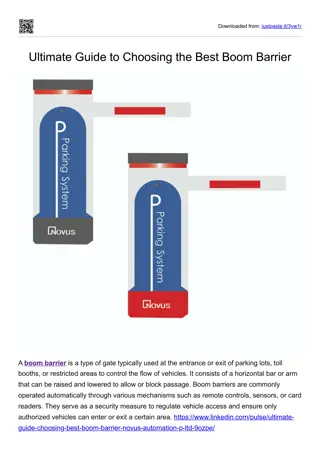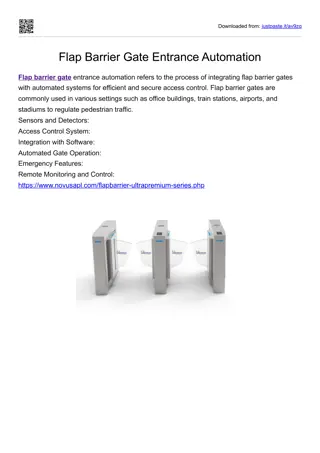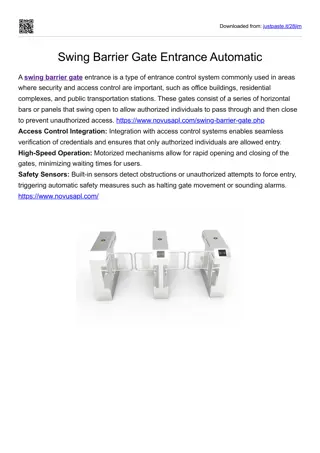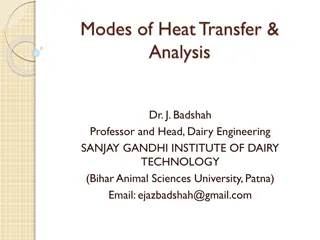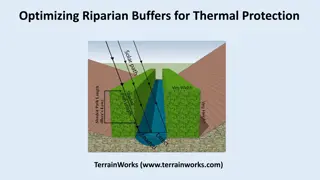3D vs. Shell Approach in Thermal Barrier Analysis
This tutorial compares the results of using the Lumped Thermal System interface with Heat Transfer in Shells physics for thermal barrier analysis on a steel column model. The shell approach, with reduced geometry to two discs, gives comparable results to the full 3D model. Temperature distributions and profiles are examined, showcasing the effectiveness of the shell approach in thermal analysis.
Download Presentation

Please find below an Image/Link to download the presentation.
The content on the website is provided AS IS for your information and personal use only. It may not be sold, licensed, or shared on other websites without obtaining consent from the author.If you encounter any issues during the download, it is possible that the publisher has removed the file from their server.
You are allowed to download the files provided on this website for personal or commercial use, subject to the condition that they are used lawfully. All files are the property of their respective owners.
The content on the website is provided AS IS for your information and personal use only. It may not be sold, licensed, or shared on other websites without obtaining consent from the author.
E N D
Presentation Transcript
Lumped Composite Thermal Barrier with Shells
Motivation This tutorial illustrates the use of the Lumped Thermal System interface with the Heat Transfer in Shells physics. A stationary computation is performed on a full 3D model of a steel column as well as on a shell approach combined with lumped thermal systems. The results of the two approaches are then compared.
Model Definition This model requires a volume geometry when solved with the Heat Transfer in Solids interface. With the Heat Transfer in Shells interface, the geometry is reduced to two discs. Model geometry for Heat Transfer in Solids Model geometry for Heat Transfer in Shells
Model Definition The temperature is imposed on the bottom boundary and on half of the top boundary. The other boundaries are thermally insulated. The shell approach uses the Lumped Thermal System interface to link the two discs built in the geometry with a thermal circuit. An extra dimension is introduced to account for the thickness of the shell. Model tree for Heat Transfer in Solids approach Model tree for Heat Transfer in Shells approach
Results With the shell approach, temperature is computed through the thickness thanks to the extra dimension. The shell and lumped system approach give the same results as the 3D approach. Temperature distribution in the steel column for the 3D (left) and shell (right) approaches
Results The temperature profile is plot on an exterior edge. The temperature jump is equally predicted by both approaches. Temperature through the thickness of the column




